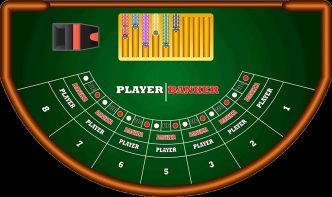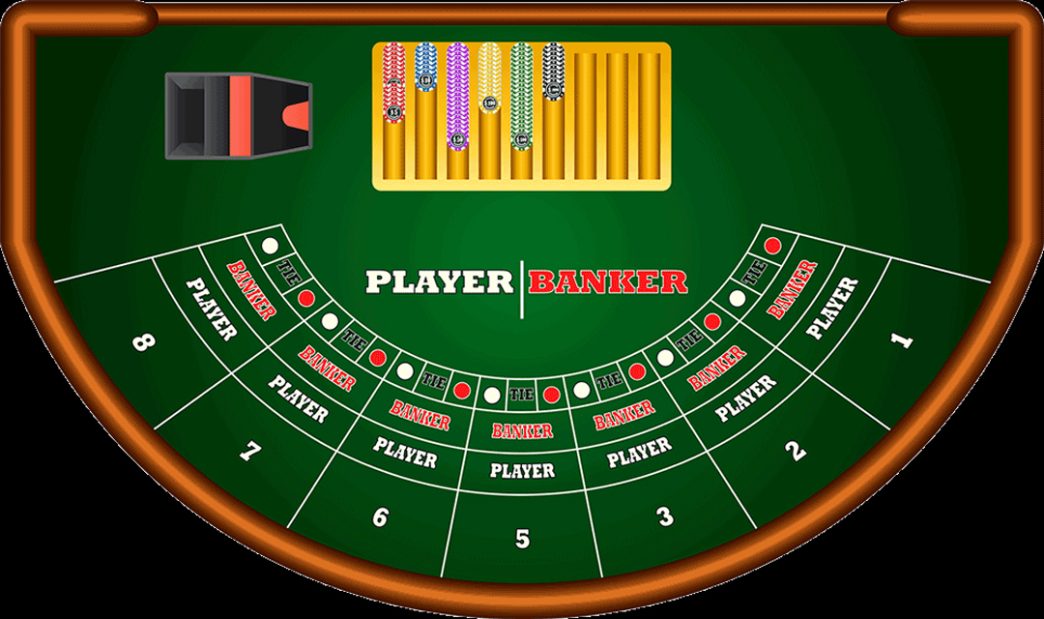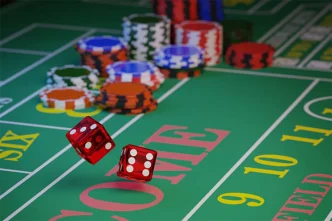Highlight
- Baccarat is a casino card game where players bet on which of two hands—the “Player” or the “Banker”—will have a total closest to nine.
- Each hand is dealt two or three cards, and the game is governed by predetermined rules that dictate whether a third card is drawn.
- With a low house edge and straightforward gameplay, baccarat is favored by both novices and high rollers alike.
Meta Title
How to Play Baccarat: A Guide to Rules and Strategies
Meta Description
Baccarat is a simple casino game where players bet on “Player” or “Banker” hands, aiming for a total closest to nine. Easy rules and low house edge appeal to all.
Permalink
How to Play Baccarat: A Guide to Rules and Strategies
Create Description for Facebook Post
“🎲 Discover the elegance of Baccarat! 🌟 Whether you’re a beginner or a seasoned player, Baccarat offers simple rules, thrilling gameplay, and a chance to strategize like a pro. Bet on the Player, Banker, or try your luck with a Tie. Ready to master this classic casino game? Learn the rules, strategies, and secrets to enhance your gaming experience today! 🃏✨ #Baccarat #CasinoGames #LearnToPlay”
Create Title and Description for Pinterest Post
Title
“Master the Art of Baccarat 🎲”
Pinterest Post Description
“Learn how to play Baccarat like a pro! Whether you’re new to the game or a seasoned player, this guide covers the rules, strategies, and tips to help you win big. Discover the simplicity and excitement of this classic casino favorite today! 🃏✨ #Baccarat #CasinoGames #GameStrategy”
Create Description for Twitter Post
“🎲 Ready to master Baccarat? Bet on Player, Banker, or Tie & aim for 9! Simple rules, low house edge, and endless excitement await. Start your journey into this classic casino game today! 🃏✨ #Baccarat #CasinoGames #LearnToPlay”
How to Play Baccarat: A Guide to Rules and Strategies
Baccarat, often seen as a game of elegance and high stakes, has captivated casino enthusiasts for centuries. Despite its sophisticated reputation, it’s surprisingly easy to learn, making it a favorite for beginners and seasoned players alike. Whether you’re drawn to its simple rules, the thrill of wagering, or the strategy behind maximizing your chances, baccarat offers something for everyone. This guide will walk you through the fundamental rules, gameplay, and effective strategies to help you master baccarat and make the most of your experience at the table, whether online or in a land-based casino.
The Objective of the Baccarat Game
The objective of baccarat is straightforward: to predict which hand—Player or Banker—will have a total closest to nine or if the game will result in a tie. Each hand consists of two or three cards, and their values are summed to determine the total. Cards 2 through 9 are worth their face value, 10 and face cards count as zero, and aces are worth one point. If the total exceeds nine, the first digit is dropped (e.g., a total of 15 becomes 5). By understanding this simple goal, you can focus on choosing the right bets to enhance your chances of success in the game.
The Cards and Their Values
In baccarat, understanding the value of the cards is crucial to grasping the game’s mechanics. Each card contributes to the total of a hand, and the goal is to have a total closest to nine. Unlike other card games, baccarat assigns unique values to certain cards, making it easier to calculate hand totals. Here’s how the cards are valued:
- Cards 2 to 9: Worth their face value (e.g., a 3 counts as 3 points).
- 10, Jack, Queen, and King: Each counts as zero points.
- Ace: Always worth one point.
- Totals Over Nine: If the sum of a hand exceeds nine, the first digit is dropped (e.g., a total of 14 becomes 4).
The Types of Bets in Baccarat
Baccarat offers three primary betting options, making it a simple yet strategic game for players. Each bet comes with its own odds, payout, and house edge, allowing you to choose based on your preferences and risk tolerance. Understanding these bets is essential to developing an effective gameplay strategy.
- Player Bet: Wager on the Player’s hand to win. This bet pays 1:1 and has a house edge of approximately 1.24%.
- Banker Bet: Bet on the Banker’s hand to win. With a house edge of about 1.06%, it’s the safest option, although a 5% commission is typically deducted from winnings.
- Tie Bet: Predict that both the Player and Banker hands will have the same total. This bet offers high payouts, usually 8:1 or 9:1, but comes with a steep house edge of over 14%.
How to Play Baccarat: Step-by-Step
Baccarat is a straightforward game, perfect for both beginners and seasoned players. The gameplay involves betting on one of three possible outcomes and letting the dealer handle the rest. Follow these simple steps to get started:
- Place Your Bet
Before the cards are dealt, you need to decide where to place your wager. You can choose one of three outcomes: the Player hand winning, the Banker hand winning, or a Tie. Each option has different odds and payouts, so your decision can impact your overall strategy. Bets must be placed before the dealer begins dealing the cards. - Cards Are Dealt
The dealer will deal two cards each to the Player and Banker hands. These are laid face-up on the table. Players do not handle or choose the cards; the dealer does everything according to the game’s rules. Each hand is made up of the dealt cards, and the goal is to see which hand comes closest to a total of nine. - Calculate Hand Totals
Add up the values of the two cards in each hand. The values are straightforward: cards 2 through 9 are worth their face value, 10s and face cards are worth zero, and aces are worth one. If the total of a hand exceeds nine, only the second digit counts (e.g., a hand totaling 14 becomes 4). This keeps all totals between 0 and 9. - Natural Win Check
If either the Player or Banker’s hand totals 8 or 9 after the initial deal, it’s considered a “natural win,” and the game ends immediately. No further cards are drawn, and the bets are settled based on the outcome. - Determine the Third Card
If neither hand totals 8 or 9, the game proceeds to the third card rule. The Player’s hand is evaluated first. If the Player’s total is 0-5, they draw a third card; if it’s 6 or 7, they stand. The Banker’s actions depend on the Player’s third card and their own hand total, following a detailed set of rules. - Declare the Winner
Once all cards are dealt, the hand closest to 9 is declared the winner. If the Player or Banker bet wins, it pays out at even money (1:1), although Banker bets are subject to a 5% commission. If the result is a Tie, only Tie bets win, and they pay out at higher odds, typically 8:1 or 9:1. All other bets are returned to the players.
Baccarat Table Layout and Etiquette
The baccarat table is designed to accommodate multiple players and includes distinct areas for placing bets on the Player, Banker, or Tie outcomes. Typically, a standard table can host up to 14 players, with designated spots for each participant. The Player and Banker areas are clearly marked, along with a separate section for Tie bets. Dealers are responsible for managing the cards and overseeing the gameplay. While baccarat is a game of chance, following proper table etiquette enhances the experience for everyone. Players should place their bets promptly, avoid touching cards unless allowed, and handle chips responsibly. Maintaining a respectful demeanor, whether winning or losing, is essential for a positive and enjoyable gaming atmosphere.
Strategies to Improve Your Game
While baccarat is largely a game of chance, employing a few strategic approaches can help improve your chances of success. By understanding the odds and betting wisely, you can maximize your playing experience and potentially reduce losses. Here are some strategies to help you approach baccarat like a seasoned player:
- Bet on the Banker
The Banker bet is statistically the best option in baccarat. It has a house edge of just 1.06%, making it more likely to win compared to the Player bet, which has a slightly higher house edge of 1.24%. Even though winning on the Banker hand is subject to a 5% commission, the odds still favor it in the long run. Many seasoned players consistently bet on the Banker because, over time, it’s the bet with the most favorable outcome. - Avoid the Tie Bet
While the Tie bet offers enticing payouts, typically 8:1 or 9:1, it comes with a very high house edge of 14.36%. This makes it a risky bet, and the chances of a tie occurring are relatively low, so it’s generally not advisable to bet on a Tie if you want to improve your odds of winning. It’s often better to focus on the Player or Banker bets, which have a much lower house edge and provide better long-term value. - Use Flat Betting
Flat betting involves placing the same bet size on each round, regardless of wins or losses. This approach helps manage your bankroll over an extended period and reduces the impact of losing streaks. By not increasing your bet size after losses, you avoid the risk of quickly depleting your bankroll. Flat betting is a simple strategy, especially for beginners, and can keep your play consistent while still allowing you to enjoy the game without risking large sums of money at once. - Stick to a Budget
Setting a clear budget before you start playing and sticking to it is key to responsible gambling. By determining how much you’re willing to spend and knowing when to walk away, you can avoid losing more than you planned. This strategy is crucial for keeping your baccarat experience enjoyable, as it helps prevent impulsive betting and ensures that you’re gambling within your means. Whether you’re winning or losing, knowing your limits will help you manage your funds and play more strategically. - Consider the 1-3-2-6 System
The 1-3-2-6 betting system is a positive progression strategy that involves adjusting your bet size after a win. The sequence works like this:
-
- Bet 1 unit on the first hand.
- If you win, increase your bet to 3 units.
- If you win again, decrease your bet to 2 units.
- If you win a third time, increase your bet to 6 units.
After this sequence, return to your original 1-unit bet. This strategy helps you take advantage of winning streaks without risking large sums, while also limiting the size of your losses. If you lose at any point in the sequence, you restart the pattern at the 1-unit bet, making it a safer way to manage your bets while capitalizing on positive outcomes.
- Track Patterns with Scorecards
Many baccarat players use scorecards to track the outcomes of each hand and try to detect patterns. While baccarat is a game of chance, players may find it useful to record the results of each round in a bid to predict trends such as streaks of wins by the Player or Banker. Common patterns include the “zigzag” or “streak” patterns, where players bet on the alternation of wins between the Player and Banker or on long streaks of either side. Although there’s no guarantee that patterns will emerge, tracking the results can help you feel more in control and may guide your decision-making. - Know When to Stop
One of the most important strategies in baccarat, or any casino game, is knowing when to stop playing. Whether you’re on a winning streak or losing streak, it’s essential to set a win limit (the amount of profit you’re satisfied with) and a loss limit (the maximum you’re willing to lose). Once you reach either of these limits, it’s time to step away from the table. This approach ensures that you don’t get carried away and helps preserve your bankroll. Many successful players know that walking away at the right time is just as important as placing the right bet.
Variations of Baccarat
Baccarat offers several exciting variations, each with its own set of rules and unique features. These variations add depth to the game, catering to different player preferences and styles. Whether you enjoy a more traditional experience or prefer a modern twist, understanding these different baccarat versions will help you choose the one that suits your gameplay the best.
- Punto Banco
Punto Banco is the most common variation of baccarat, typically found in most casinos. In this version, the casino acts as the Banker, and players bet on either the Player’s or Banker’s hand. The cards are dealt according to a fixed set of rules, and the game is purely based on chance, with no player decisions involved during play. - Chemin de Fer
This is the traditional French version of baccarat, where players take turns acting as the Banker. Unlike Punto Banco, Chemin de Fer involves more interaction, as the Banker position rotates, and players can choose to challenge the Banker by betting against them. It’s a more strategic and social variation that offers higher levels of engagement. - Baccarat Banque
Baccarat Banque is similar to Chemin de Fer, but instead of rotating the Banker role, one player is chosen to be the permanent Banker for the entire game. This version is typically played with three hands (two Player hands and one Banker hand). It’s favored by high-rollers and adds a layer of strategy due to the permanent Banker role. - Mini Baccarat
Mini Baccarat is a scaled-down version of Punto Banco, often found in smaller casino settings. It uses the same rules as the traditional game, but with lower betting limits and a smaller table, accommodating fewer players. It’s a great option for those looking for a faster-paced and more casual baccarat experience. - No Commission Baccarat
In No Commission Baccarat, players can still bet on the Banker or Player hands, but the usual 5% commission on Banker wins is removed. However, if the Banker wins with a hand total of 6, the payout is reduced to 0.5:1 instead of the usual 1:1. This variation gives players a more straightforward betting experience while still offering significant payouts. - Super 6 Baccarat
Super 6 Baccarat is similar to traditional Baccarat but with a twist. In this variation, a winning Banker hand that totals 6 pays 1:1 instead of the usual 0.95:1. This changes the overall odds, and players can wager on the “Super 6” side bet, which pays out for Banker wins with a total of 6. - Live Dealer Baccarat
Live Dealer Baccarat brings the excitement of a real casino experience to online gaming. In this variation, a live dealer conducts the game through a video stream, and players interact with the dealer and other participants in real-time. It’s an immersive experience that closely resembles playing in a physical casino, but from the comfort of your own home.
Common Mistakes to Avoid
While baccarat is a straightforward game, many players make mistakes that can negatively impact their experience and bankroll. Recognizing and avoiding these common pitfalls can help you play more efficiently, minimize losses, and maximize enjoyment. Here are some detailed mistakes to watch out for:
- Chasing Losses
One of the most common mistakes players make is trying to recover lost money by increasing their bets. This is known as “chasing losses.” It often leads to even bigger losses, as the game is still based on chance, and increasing your bets doesn’t guarantee a win. Instead, stick to your pre-set budget and avoid making emotional decisions, as chasing losses can quickly deplete your bankroll. - Betting on the Tie
While the Tie bet may seem attractive because of its high payouts, it comes with a significant disadvantage. The Tie bet has a house edge of over 14%, meaning it’s far less likely to win compared to the Player and Banker bets. Although the payout can be as high as 8:1 or 9:1, the low probability of hitting a tie makes this bet a risky choice for most players. It’s generally wiser to avoid the Tie bet in favor of the more favorable Player or Banker options. - Not Setting a Budget
One of the simplest but most important rules of gambling is setting a budget. Many players begin their baccarat session without clearly defining how much they are willing to lose, which can lead to careless spending. It’s essential to set a strict budget for each session and stick to it, even if you’re on a winning streak. By doing so, you can play responsibly and ensure that you don’t overspend. - Increasing Bet Sizes After Losses
A common mistake is increasing your bet size after a loss in an attempt to recover your money quickly. This approach, often referred to as the “Martingale” system, can be dangerous because a few consecutive losses can quickly deplete your bankroll. Baccarat is a game of chance, and betting larger amounts won’t change the odds. It’s better to maintain consistent bet sizes and avoid chasing after losses. - Ignoring Commission on Banker Bets
While the Banker bet is the statistically best option with the lowest house edge, players sometimes overlook the 5% commission deducted from Banker wins. This commission can add up over time and affect the overall profitability of betting on the Banker. Always remember to account for the commission when planning your betting strategy, as it can slightly alter the payout and long-term results. - Overcomplicating the Game
Some players try to overcomplicate baccarat by using complex strategies or systems, even though the game is primarily based on luck. Trying to predict outcomes or relying on patterns in a game of chance often leads to confusion and poor decisions. The best approach is to keep things simple: focus on betting on the Banker or Player, and avoid trying to predict outcomes based on past results. - Failing to Manage Your Emotions
Emotions can have a big impact on your decision-making at the baccarat table. Whether you’re on a winning streak and feeling overconfident or experiencing a losing streak and getting frustrated, emotional betting can lead to mistakes. It’s essential to stay calm and make decisions based on logic and strategy, rather than emotions. Set win and loss limits, and stick to them to maintain control over your gameplay.
Conclusion
Baccarat is a thrilling and straightforward game that offers both excitement and simplicity. While it’s primarily a game of chance, understanding the rules, betting options, and strategic tips can help you make more informed decisions and improve your overall experience. By sticking to a solid strategy, avoiding common mistakes, and managing your bankroll wisely, you can enjoy the game while minimizing risks. Whether you’re playing in a land-based casino or online, baccarat offers a unique blend of high stakes and ease, making it an enjoyable choice for both beginners and seasoned players alike. Keep these tips in mind, and remember that the key to enjoying baccarat is to play responsibly and have fun!
- Info graphics
Baccarat is a casino card game where players bet on which of two hands—the “Player” or the “Banker”—will have a total closest to nine. Each hand is dealt two or three cards, and the game is governed by predetermined rules that dictate whether a third card is drawn.
- Place Your Bet: Choose to bet on the Player, Banker, or Tie before the deal.
- Cards Are Dealt: The dealer deals two cards each to the Player and Banker.
- Calculate Hand Totals: Add card values, with totals above nine using only the second digit.
- Natural Win Check: A hand totaling 8 or 9 wins immediately without further play.
- Determine the Third Card: The third card is drawn based on specific rules for each hand.
- Declare the Winner: The hand closest to 9 wins; payouts depend on the type of bet placed.
- Info graphics
- Bet on the Banker: The Banker bet offers the lowest house edge and best long-term odds.
- Avoid the Tie Bet: The Tie bet has a high house edge, making it a risky and less favorable option.
- Use Flat Betting: Keep your bet size consistent to manage your bankroll effectively.
- Stick to a Budget: Set and adhere to a budget to gamble responsibly and avoid losses.
- Consider the 1-3-2-6 System: Use a positive progression strategy to maximize winning streaks safely.
- Track Patterns with Scorecards: Record game outcomes to detect potential trends or streaks.
- Know When to Stop: Set win and loss limits to maintain control and preserve your bankroll.
- Info-graphics
- Punto Banco: The most common version where the casino acts as the Banker and follows fixed rules.
- Chemin de Fer: A French version where players take turns as the Banker and make strategic decisions.
- Baccarat Banque: A version with a permanent Banker and three hands, favored by high-rollers.
- Mini Baccarat: A smaller, faster version of Punto Banco with lower betting limits.
- No Commission Baccarat: A variation without the 5% Banker win commission, with adjusted payouts for totals of 6.
- Super 6 Baccarat: Traditional baccarat with special payouts for Banker wins totaling 6.
- Live Dealer Baccarat: An online version with live streaming, offering a real casino experience.
- Info-graphics
- Chasing Losses: Avoid increasing bets to recover losses, as it often leads to bigger losses.
- Betting on the Tie: Avoid the high-risk Tie bet due to its low probability and high house edge.
- Not Setting a Budget: Define and stick to a budget to play responsibly and prevent overspending.
- Increasing Bet Sizes After Losses: Avoid raising bets after losses, as it can quickly deplete your bankroll.
- Ignoring Commission on Banker Bets: Account for the 5% commission on Banker wins in your strategy.
- Overcomplicating the Game: Keep it simple by focusing on Banker or Player bets and avoid complex systems.
- Failing to Manage Your Emotions: Stay calm and logical, setting win and loss limits to maintain control.







